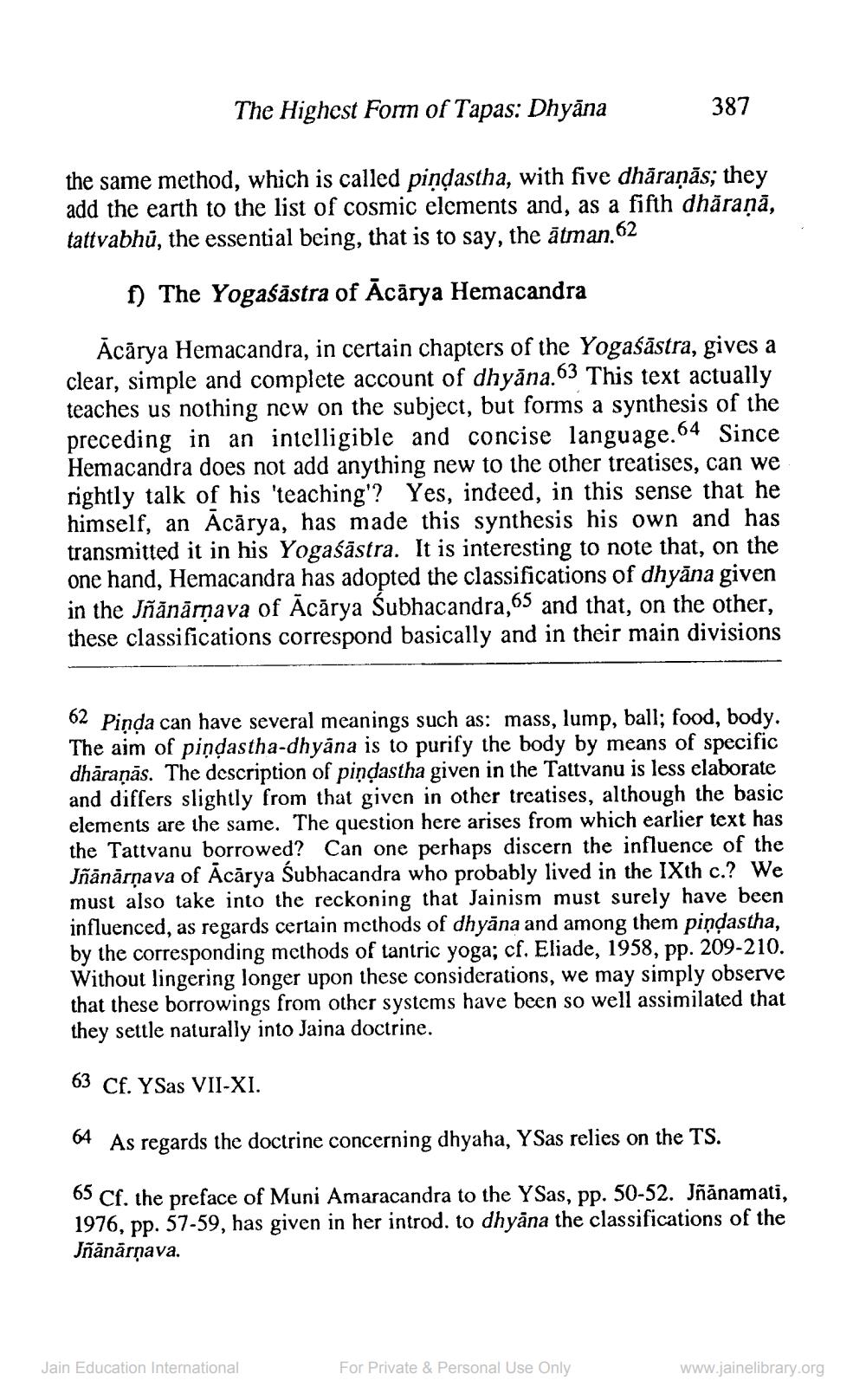________________
The Highest Form of Tapas: Dhyāna
387
the same method, which is called pindastha, with five dhāraņās; they add the earth to the list of cosmic elements and, as a fifth dhăraņā, tattvabhū, the essential being, that is to say, the ātman.62
f) The Yogaśāstra of Ācārya Hemacandra
Ācārya Hemacandra, in certain chapters of the Yogaśāstra, gives a clear, simple and complete account of dhyāna.63 This text actually teaches us nothing new on the subject, but forms a synthesis of the preceding in an intelligible and concise language.64 Since Hemacandra does not add anything new to the other treatises, can we rightly talk of his 'teaching'? Yes, indeed, in this sense that he himself, an Acārya, has made this synthesis his own and has transmitted it in his Yogaśāstra. It is interesting to note that, on the one hand, Hemacandra has adopted the classifications of dhyāna given in the Uñānārņava of Acārya Subhacandra,65 and that, on the other, these classifications correspond basically and in their main divisions
62 Pinda can have several meanings such as: mass, lump, ball; food, body. The aim of pindastha-dhyāna is to purify the body by means of specific dhāraņās. The description of pindastha given in the Tattvanu is less elaborate and differs slightly from that given in other treatises, although the basic elements are the same. The question here arises from which earlier text has the Tattvanu borrowed? Can one perhaps discern the influence of the Jñānārņava of Ācārya Subhacandra who probably lived in the IXth c.? We must also take into the reckoning that Jainism must surely have been influenced, as regards certain methods of dhyāna and among them piņdastha, by the corresponding methods of tantric yoga; cf. Eliade, 1958, pp. 209-210. Without lingering longer upon these considerations, we may simply observe that these borrowings from other systems have been so well assimilated that they settle naturally into Jajna doctrine.
63 Cf. YSas VII-XI.
64 As regards the doctrine concerning dhyaha, YSas relies on the TS.
65 Cf. the preface of Muni Amaracandra to the Y Sas, pp. 50-52. Jñānamati, 1976, pp. 57-59, has given in her introd. to dhyāna the classifications of the Jñānārnava.
Jain Education International
For Private & Personal Use Only
www.jainelibrary.org




